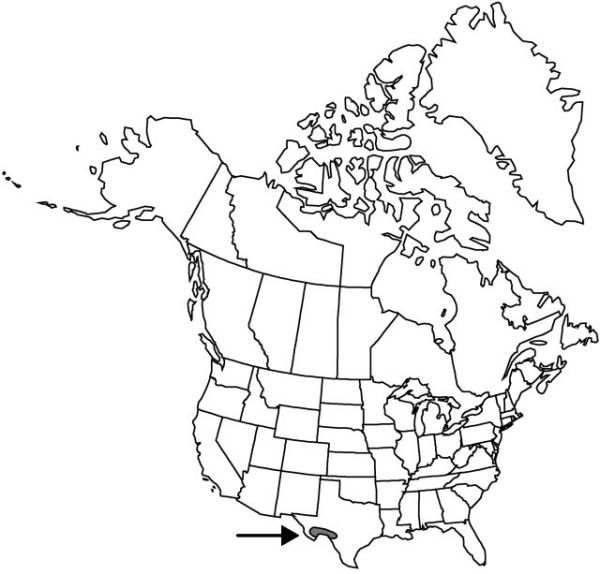Difference between revisions of "Yucca thompsoniana"
Rep. (Annual) Missouri Bot. Gard. 22: 101, plates 104–107. 1911.
FNA>Volume Importer |
imported>Volume Importer |
||
| (One intermediate revision by the same user not shown) | |||
| Line 47: | Line 47: | ||
|publication year=1911 | |publication year=1911 | ||
|special status= | |special status= | ||
| − | |source xml=https:// | + | |source xml=https://bitbucket.org/aafc-mbb/fna-data-curation/src/2e0870ddd59836b60bcf96646a41e87ea5a5943a/coarse_grained_fna_xml/V26/V26_884.xml |
|genus=Yucca | |genus=Yucca | ||
|species=Yucca thompsoniana | |species=Yucca thompsoniana | ||
Latest revision as of 21:18, 5 November 2020
Plants solitary or forming colonies of rosettes, caulescent, arborescent, mostly asymmetrical, 0.7–2.5 m, not including inflorescence, to 30 cm diam.; rosettes each with more than 100 leaves. Stems 1, erect, 1–3-branched. Leaf blade linear, flat or concavo-convex or slightly keeled, widest at or above middle, 20–30(–45) × 0.7–1.2 cm, flexible, ± scabrous adaxially and abaxially, margins denticulate, yellow or orangish red, corneous, apex sharp-pointed. Inflorescences paniculate, racemose at apex, arising beyond rosettes, 5–8 dm; branches to 2 dm; bracts erect, 10–13(–17) cm; peduncle sometimes scapelike, (0.3–)0.4–0.7 m, 1.3–2 cm diam., glabrous or glabrescent. Flowers pendent; perianth globose to campanulate; tepals distinct, white, narrowly elliptic, 3.5–6.5 × 1.2–3.5 cm, glossy, apex sharply acuminate; filaments 1.7–3.3 cm; pistil 2.5–3.8 × 0.4–0.8 cm; style white, 6–18 mm; stigmas lobed. Fruits erect, capsular, dehiscent, ovoid, rarely constricted, 3.5–7 × 2–2.5 cm, dehiscence septicidal. Seeds dull black, thin, 6–8 mm diam.
Phenology: Flowering spring.
Habitat: Rocky slopes and hills
Elevation: 200–1400 m
Distribution

Tex., n Mexico (Chihuahua, Coahuila).
Discussion
Yucca thompsoniana occurs in the trans-Pecos area of Texas. J. M. Webber (1953) characterized it as a dwarflike form of Y. rostrata, and the differences are perhaps not sufficient to merit separate recognition. Webber also suggested that it may hybridize with Y. reverchonii.
Selected References
None.